CLS light
pollution filter for making astronomical images in suburban skies:
In November 2014, I bought a CLS (city light suppression)
filter from China to improve deep sky
imaging of faint
objects. In this page I documented some results using this
light pollution filter.
I live in at the edge of a town of 67000 inhabitants
in the north of
the Netherlands. The light pollution is not too bad. When the
sky is clear I
can
see the Milky Way at moonless nights. The sky in direction west to the
city center is
not
good.
The 2" filter was bought for US$ 75,- from China. It doesn't
indicated the manufacturer but similar filter with the
same white band have an indication "AstroOptic CLS" or "Optolong CLS".
The
box indicates Q1-CLS2-01
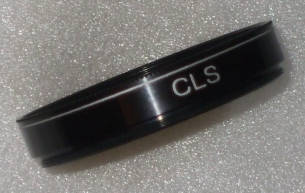
Against the cloudy sky. For the human eye it is more blue:
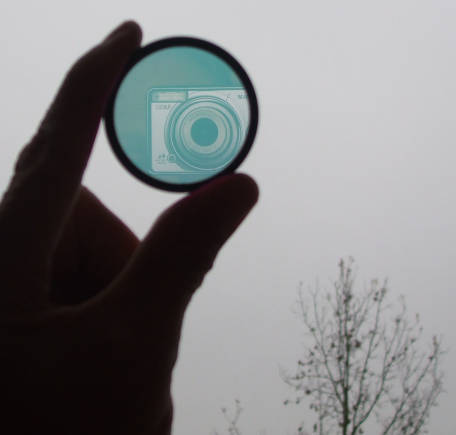
Transmission curve of the Optolong CLS filter:
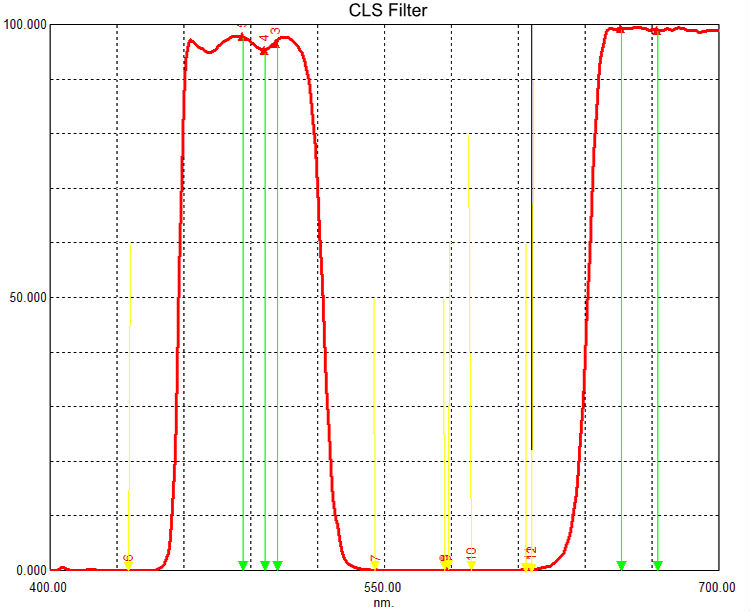
As
a overlay on the resonse curve of the QHY8 CCD camera, the rey part is
blocked by the CLS filter. Note that most of the green and
part of
red is blocked. This will block the orange light
pollution:
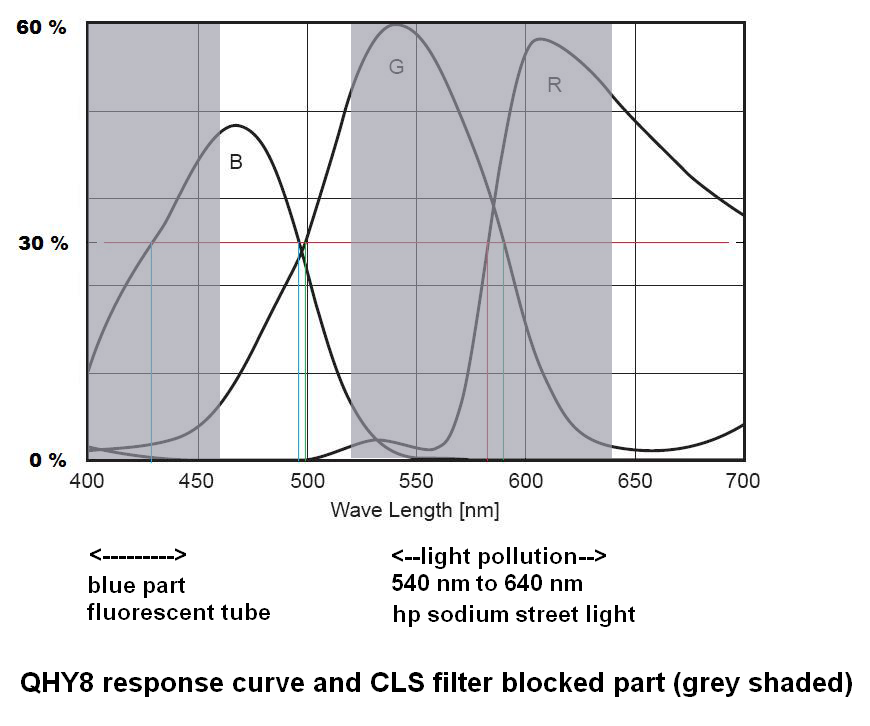
Important emissions lines:
- 486nm (H-beta) e.g. M43, M20
- 496nm (OIII) e.g. green of M27
- 501nm (OIII) e.g. green of M27
- 656nm (H alpha) e.g. deep red nebula like NGC1499
Compact
camera test on a spectrum made with compact disk (CD) and an
incandescent light bulb The violet, yellow & orange
colours
dissapear:
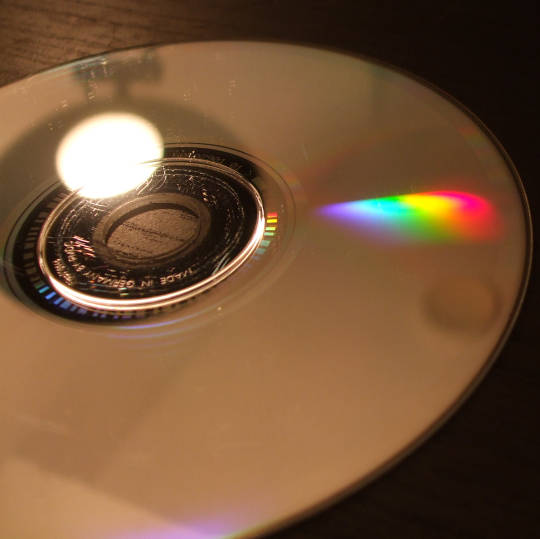
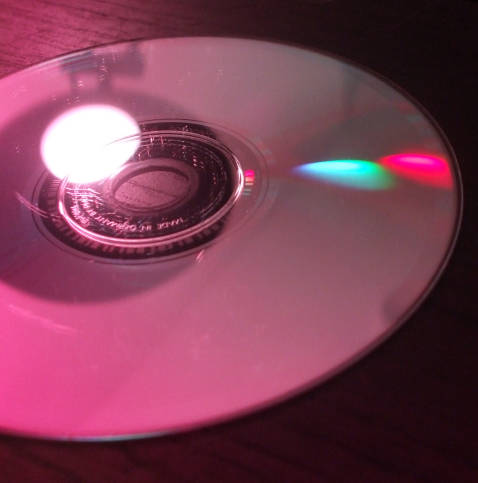
I measured the light drop of the CLS filter in front of the QHY8 facing
a white wall illuminated by an incandescent light bulb
and a compact
fluorescent lamp
|
Darkening of a incandescent light bulb
by CLS filter measured with the QHY8 CCD camera |
Darkening of a compact
fluorescent lamp by CLS filter measured with the
QHY8 CCD camera |
| red |
46% left
|
11% left |
| green |
35% left |
12% left |
| blue |
48% left |
16% left |
The
overall more then 50% drop of a wide spectrum light of the incandescent
light bulb shows that this filter will increase the exposure time star
objects such as globular clusters at
least twice. However it
will block most of the light from fluorescent lamps
and
therefore increase the contrast with about a factor 3. More or less the
same results can be measured in above image of the filter held against
sky. The compact camera measures a drop in intensity for red of 50%,
green 74% and blue to 73%. All caused by blocking a part of
the solar spectrum. The blocking will not occur for nebula
transmitting in one of the emission lines.
Here some promising test results:
First
an image of NGC1499 with 135 mm lens without filter 13x100
seconds
exposure a later resized to 50%. The image is only flattened and not
further processed. The main emission line of the nebula is H alpha,
that is hydrogen emitting at the wavelength 656.3 nm, at the red end of
the visible light spectrum.
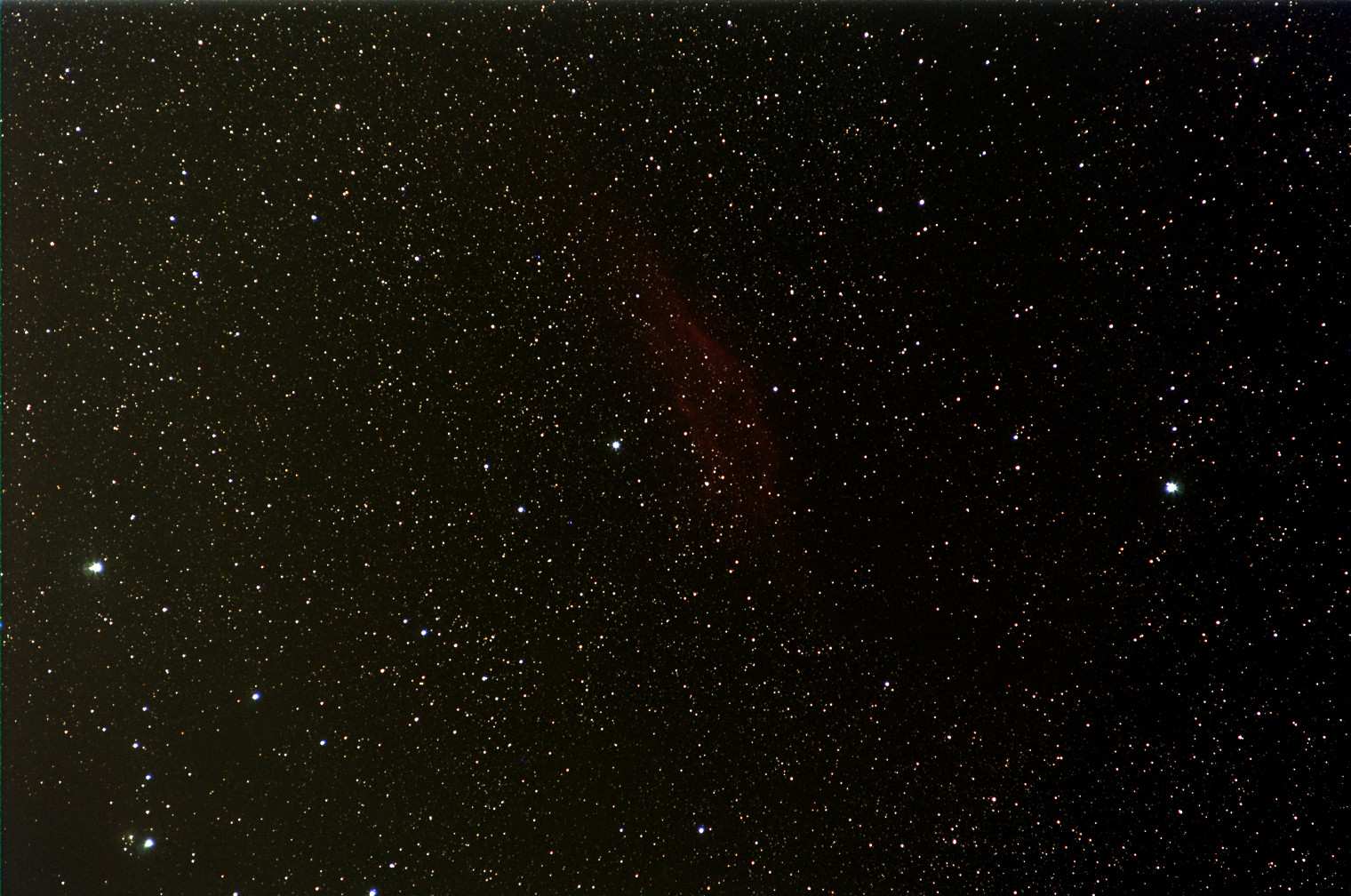
The
result with the CLS filter placed (loose) in front of the 135 mm lens.
No focus adjustment and same 13x100 seconds exposure.
Image later
resized to 50%.
Note that the intensity of stars has reduced more
then 50 % but the contrast of NGC1499 nebula (emitting at 656.3
nm) improved a lot. Sky light pollution changes
from green
brown to blue.The image is only flattened and not further processed:
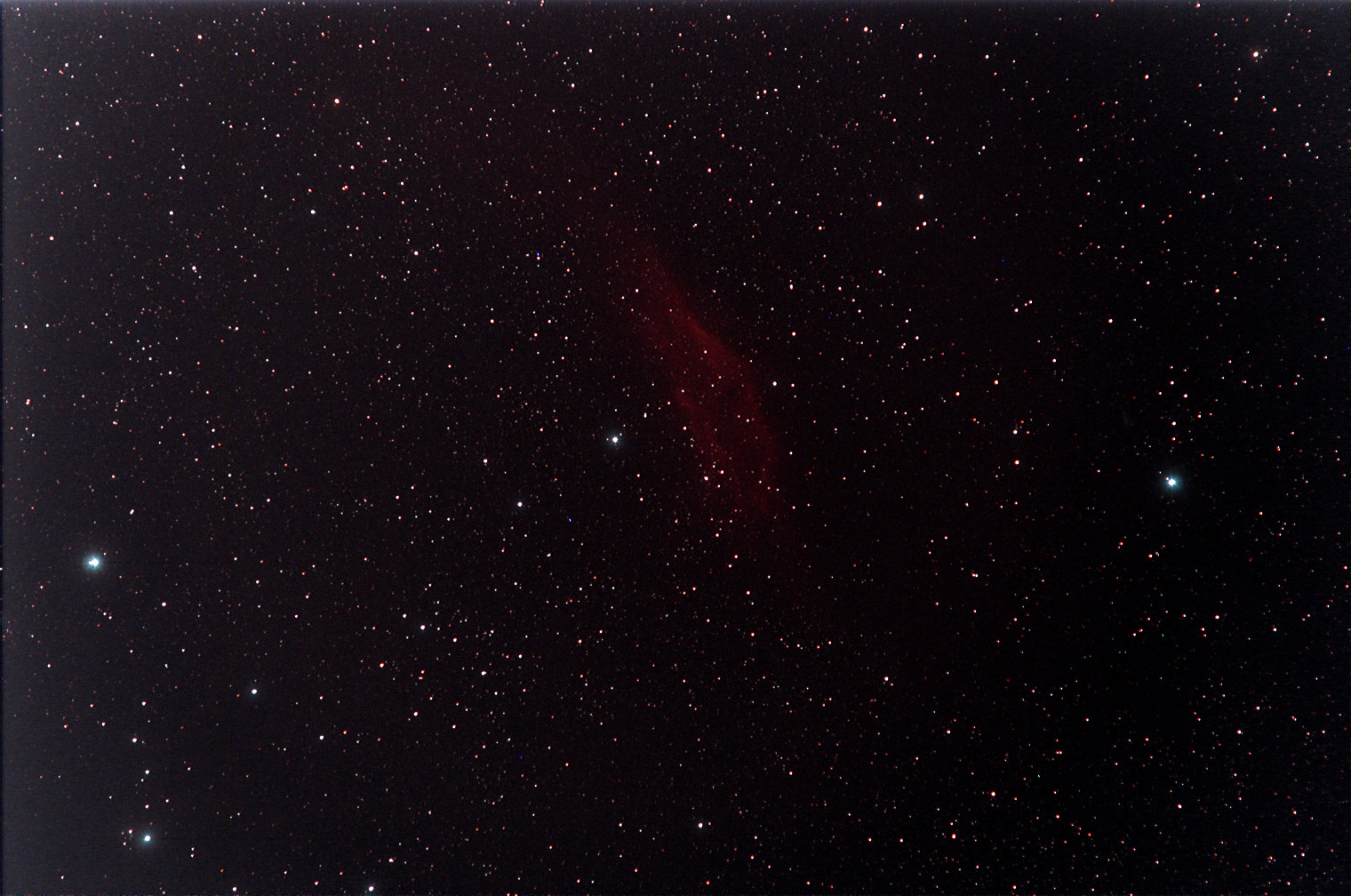 Both images processed and zoomed in at NGC1499:
Both images processed and zoomed in at NGC1499:
Without filter:
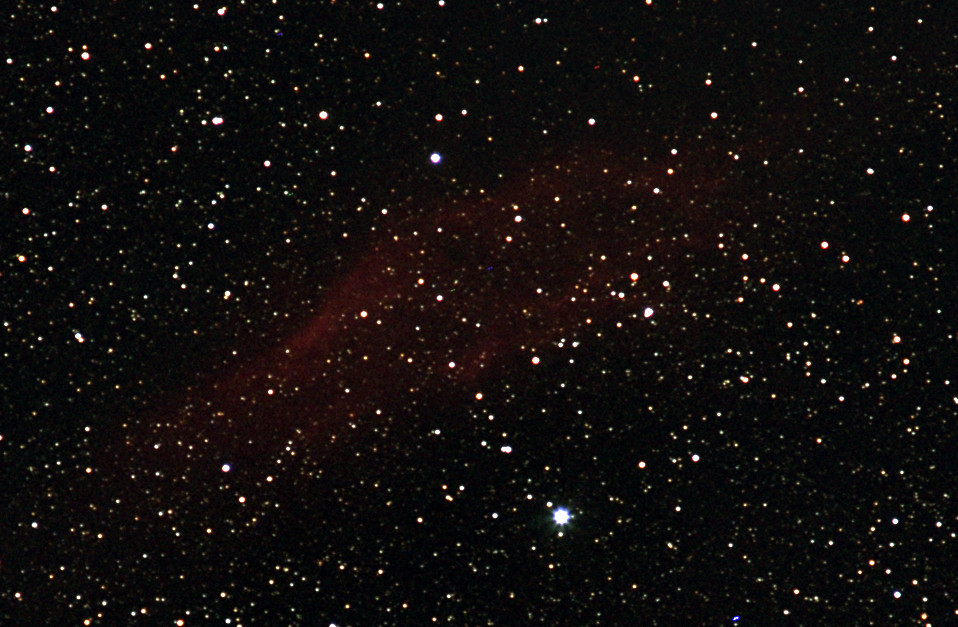
With CLS filter in place:
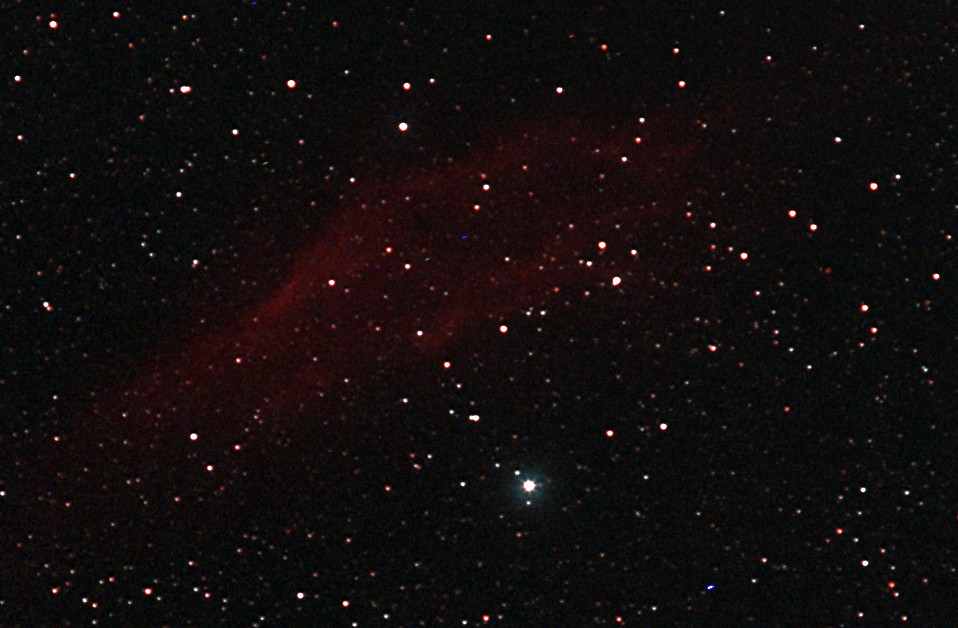
Written in 2014-11
Note October 2015:
During an imaging
session with the CLS filter, I had unsharp stars in one corner. This
problem did not occur in the past. After some tries, I solved it
by unscrewing the filter a little. If I tied the filter softly, I
presume it bends the filter resulting in unsharp stars in one corner.
Bright stars have still a small halo but that is because it is not a
high quality filter.
Back to main page
 , 2015-10
, 2015-10








 Both images processed and zoomed in at NGC1499:
Both images processed and zoomed in at NGC1499:

 , 2015-10
, 2015-10